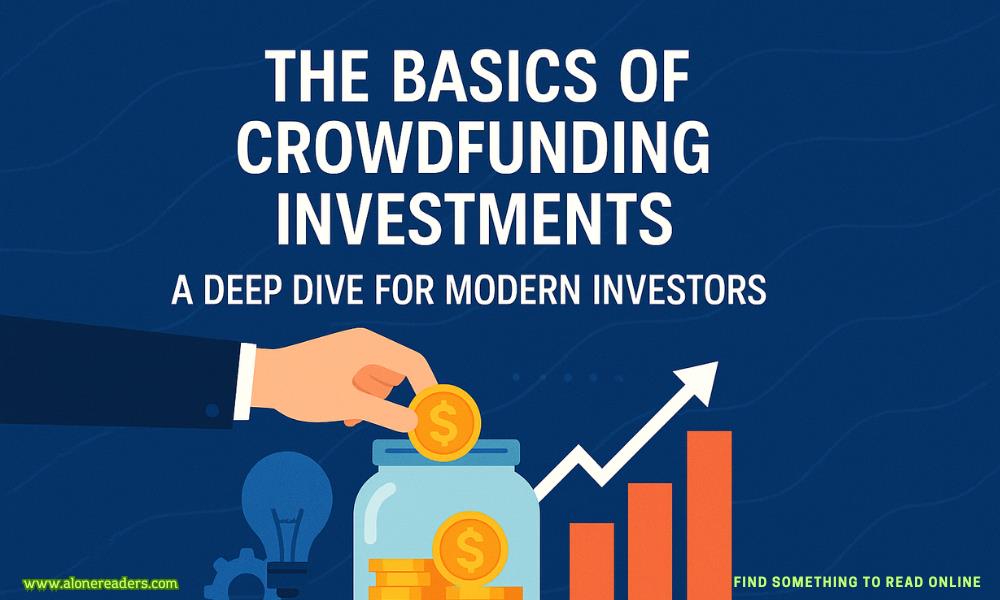
Crowdfunding investments are no longer experimental—they are a legitimate component of the modern investor’s portfolio. Once reserved for tech-savvy early adopters or niche startup enthusiasts, platforms like StartEngine, SeedInvest, and Republic have made it possible for everyday individuals to fund, and profit from, business ventures. But this form of investing is complex and multifaceted, requiring a deep understanding of its models, risk profile, and legal landscape.
In this article, we’ll break down the specifics of crowdfunding investments: what they are, how they work, the various types, platform mechanics, legal frameworks, risk assessment, expected returns, and best practices.
Definition and Core Concept
Crowdfunding investments involve pooling capital from a large number of individuals—often via online platforms—to finance a business or project. Unlike donations or pre-orders (common in reward-based models), these investors receive something in return, typically equity, debt instruments, or revenue share.
Crowdfunding vs. Traditional Investing
Unlike traditional stock markets or VC funding, crowdfunding eliminates intermediaries like brokers or investment banks. It also allows earlier entry into startups, though with less liquidity and greater risk.
Equity Crowdfunding
Investors purchase a share of ownership in a startup or early-stage company. Returns are realized through dividends, buyouts, or a potential IPO. Common platforms: StartEngine, Wefunder.
Debt Crowdfunding (Peer-to-Peer Lending)
Here, investors lend money to individuals or businesses in return for interest payments. It works like a bond market for private loans. Platforms include LendingClub and Prosper.
Revenue-Sharing Crowdfunding
Investors receive a portion of a company’s revenue until a certain return is achieved. This model suits businesses with stable cash flow but uncertain long-term valuation.
Real Estate Crowdfunding
Investors pool funds to buy property—either for rental income or capital appreciation. Popular platforms include Fundrise and RealtyMogul.
Convertible Notes and SAFEs
Some startups issue convertible notes or Simple Agreements for Future Equity (SAFEs), which convert into equity during a priced round. These instruments are commonly used in early-stage rounds.
Issuer Onboarding
Businesses seeking funds submit detailed applications with financials, pitch decks, business models, and compliance documents. Platforms perform due diligence, though depth varies.
Campaign Launch and Duration
Once approved, a campaign page goes live with investment terms, target amount, valuation, and offering type. Campaigns typically run for 30–90 days.
Investment Process for Users
Investors register on the platform, review offerings, and can invest as little as $10 to $500 depending on the platform. Funds are held in escrow until the target is met.
Post-Investment Reporting
Regulated platforms require businesses to provide annual reports and disclosures. However, frequency and quality of updates can vary.
Regulation Crowdfunding (Reg CF)
In the U.S., Reg CF allows companies to raise up to $5 million per year from non-accredited investors via approved platforms. It requires SEC filings (Form C), disclosures, and annual reporting.
Regulation A+
Allows businesses to raise up to $75 million but requires stricter SEC compliance and financial audits. More expensive but gives wider access to investors.
Accredited vs. Non-Accredited Investors
Equity crowdfunding democratizes access, allowing non-accredited investors to participate—unlike private placements which are limited to high-net-worth individuals.
Due Diligence Requirements
While platforms perform basic screening, the SEC puts responsibility on investors to conduct their own due diligence. Unlike listed securities, there are no mandatory analyst reports or third-party audits unless mandated by the offering tier.
High Failure Rate of Startups
Most startups fail. Equity investors often lose 100% of their capital unless there’s a successful acquisition or IPO.
Lack of Liquidity
Shares acquired through crowdfunding are typically illiquid for years. Secondary markets are developing but still limited in scope.
Valuation Arbitrary or Inflated
Unlike public stocks, private company valuations are often set by founders or early investors with minimal oversight.
Limited Control and Voting Rights
Investors may not get board seats or voting rights, especially with SAFEs or convertible notes.
Dilution Risk
Future funding rounds may dilute early investors’ shares unless specific protections are in place.
Fraud and Mismanagement
Though rare, some campaigns have involved misleading claims, poor execution, or even fraud. Platforms are improving vetting, but oversight is still evolving.
Return Profile by Investment Type
Exit Options
Business Model and Traction
Examine revenue streams, margins, customer base, and growth rates. Companies with clear paths to profitability are less risky.
Founding Team
Prior experience, commitment, and integrity of the team are key indicators. Solo founders or first-time entrepreneurs pose higher risk.
Financials and Projections
Are the revenue projections realistic? Are costs clearly defined? Look for audited or reviewed financials.
Valuation and Terms
Is the valuation in line with industry benchmarks? What are the terms of the investment—preferred shares, SAFE, or common stock?
Platform Reputation
Use well-known and regulated platforms. Look for transparency, investor communication history, and track records.
Diversify Investments
Never invest a large sum in a single company. A portfolio of 10–20 startups can help manage risk.
Start Small and Learn
Begin with small investments to understand platform mechanics and return timelines.
Read the Fine Print
Understand share types, investor rights, and exit conditions. Look out for unusual clauses.
Monitor Post-Investment Updates
Stay engaged with your portfolio companies. Updates can alert you to risks or new investment opportunities.
Be Patient
Equity crowdfunding is a long-term play. Returns may take 5–10 years—or never materialize.
Conclusion: Is Crowdfunding Investment Right for You?
Crowdfunding investment is not a shortcut to wealth. It’s a calculated risk, blending startup enthusiasm with financial acumen. For those willing to tolerate illiquidity, perform due diligence, and diversify wisely, it offers a front-row seat to innovation—and the potential for meaningful returns.
However, it's essential to approach this asset class with realistic expectations, a clear understanding of platform mechanics, and a keen eye for risk. Whether you're investing in a biotech startup or co-funding a real estate project, the key is education, patience, and diversification.